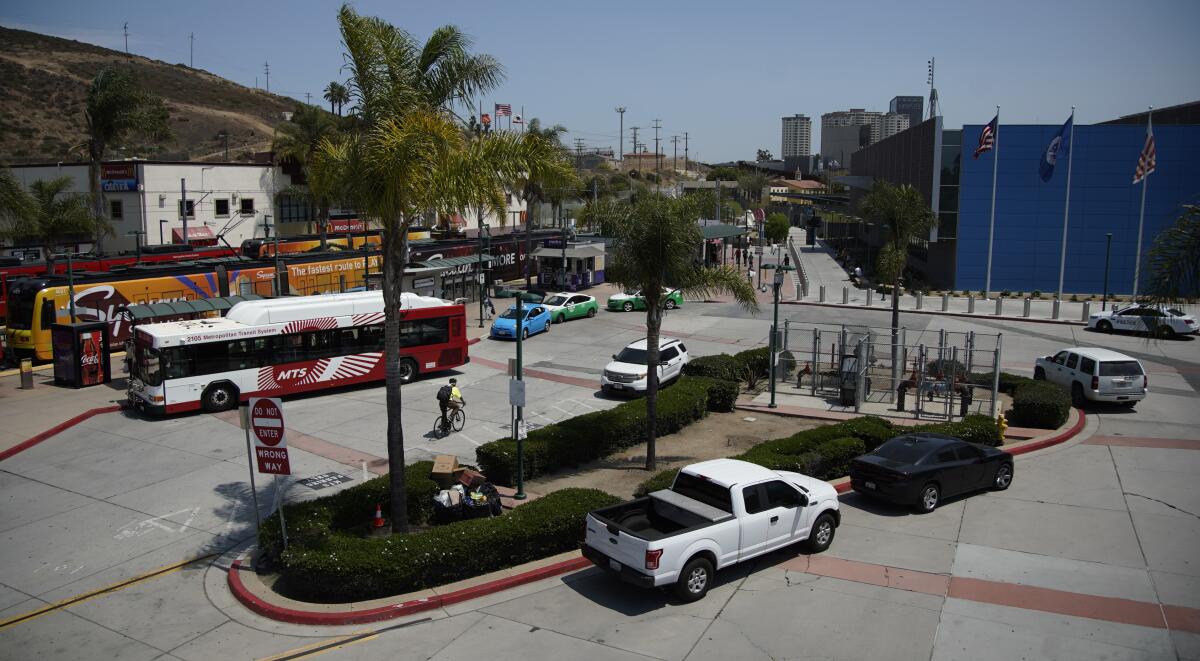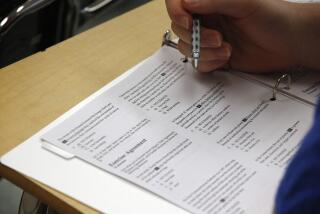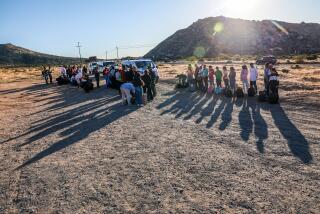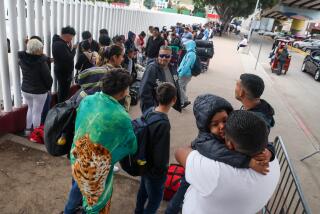New COVID-19 testing site set to open near pedestrian crossing in San Ysidro along U.S.-Mexico border

- Share via
SAN DIEGO — Later this week, a COVID-19 testing site will open up just outside a pedestrian crossing in San Ysidro, where tens of thousands of people enter the United States from Mexico every day.
The PedEast testing location is thought to be the closest to the U.S.-Mexico border in any state, and is the result, the county says, of a data-driven, community-led strategy that aims to slow the spread of COVID-19 in South Bay communities.
Officials have long known that the pandemic has disproportionately affected the South County region, where cases continue to climb. Factors that contribute to these increases include long-standing disparities in access to health care, a large population of essential workers and a lack of affordable housing.
Proximity to the border also plays a role, county officials said.
As in San Diego County, COVID-19 cases are increasing south of the border. Tijuana, a city of about 1.8 million, has logged nearly 4,200 COVID-19 cases. The state of Baja California, which has an estimated population of about 3.3 million, has reported around 14,200 cases and more than 2,760 deaths.
San Diego County has a higher case rate, with nearly 32,000 cases among about 3.3 million residents, but also tests at a much higher rate than its sister state to the south.
The two regions are inextricably linked by daily travel that flows across the border, in both directions, every day.
“We are two nations. We’re two cities. But this is really a binational culture we have,” said Supervisor Greg Cox, whose district includes the South County region.
Despite U.S. restrictions on nonessential travel, between 18,000 and 22,000 people cross the border at PedEast every day, federal officials said. Many of these individuals — including American citizens who live in Tijuana and Mexican citizens with work visas — are essential workers in healthcare, at public agencies and in restaurants.
It can be difficult for these employees to find time to get tested, county officials said, even though many are at greater risk of contracting COVID-19. Although Customs and Border Protection officials watch for symptoms of the virus, referring travelers who appear sick to health authorities, the federal agency doesn’t perform testing of its own.
The PedEast testing site is designed with these essential workers in mind. The location will run Monday through Friday and will accept its first walk-ups in the early morning, when employees are more likely to cross. No appointment is necessary and about 200 tests will be available. The site is also near the San Ysidro Transit Center, making it accessible to nearby residents as well.
It will cost about $309,000 a month to operate.
County officials stressed that although PedEast sits on federal property, Customs and Border Protection officials are not involved in the testing. And people looking to get a test will not be asked about their immigration status or the composition of their household.
“We’ve said many times that diseases do not know borders,” said Barbara Jiménez, director of central and south regions for the county’s Health and Human Services Agency. “Having grown up along the border and having been a cross-border employee myself, I understand the fluidity of that region. This testing effort recognizes the needs of our community, but also our partnership with Baja California.”
Increasing testing across the South Bay has long been part of the county’s strategy to better contain COVID-19. The faster health officials can identify people who are sick, the faster they can help isolate them so they don’t continue spreading the disease to other community members.
That’s why nearly a third of the county’s testing sites can be found in South County, where COVID-19 case numbers are highest. Health providers at these locations performed more than half of the tests in the county between July 22 and Aug. 5. These sites also see high utilization rates, meaning most of the tests that are available are used.
Winkle and Solis write for the San Diego Union-Tribune.
More to Read
Sign up for Essential California
The most important California stories and recommendations in your inbox every morning.
You may occasionally receive promotional content from the Los Angeles Times.










